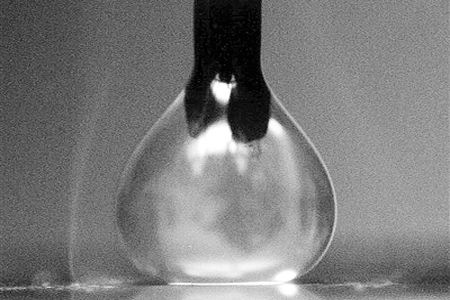Chinese and American researchers have prepared a new type of magnetic droplet with liquid fluidity and permanent magnetism by using all-liquid 3D printing technology, which provides a new way to develop magnetically controlled liquid robots with flexible electronics and targeted drug delivery.
At the nanoscale level, the traditional ferromagnetic fluid itself does not have magnetic poles, and only under the action of external magnetic field can it show specific magnetism. But research published in the latest issue of the us journal science shows that the new magnetic droplet material behaves like a solid magnet without the need for an external magnetic field, and still looks like a liquid.
Researchers at Beijing university of chemical technology, Amherst university of Massachusetts, Lawrence Berkeley national laboratory of the us department of energy and other institutions used all-liquid phase 3D printing technology to "print" ferrofluid droplets with a diameter of about 1mm, each of which contains a large number of iron oxide nanoparticles with a diameter of 20 nanometers. Magnetometry showed that about a billion nanoparticles were "packed together", showing magnetism when excited by a magnetic coil. These external nanoparticles deliver magnetic orientation to the nanoparticles at the core of the droplet, making the entire droplet permanently magnetic.
The researchers used all-liquid 3D printing and microfluidic molding to create magnetic droplets of any shape. Break them down into smaller droplets and they remain magnetic. The formed liquid can also be reversibly magnetized or demagnetized by changing the acid-base environment.
Due to its special physical properties, ferrofluid is now used in electronic equipment, medical devices, mechanical engineering and material science research. The new ferromagnetic droplets are expected to be used in more scenarios in the future, such as magnetically-controlled robots that can deliver drugs in the human body and controllable liquid microreactors.
